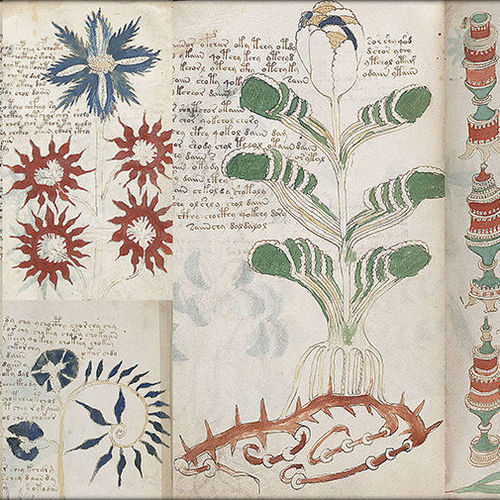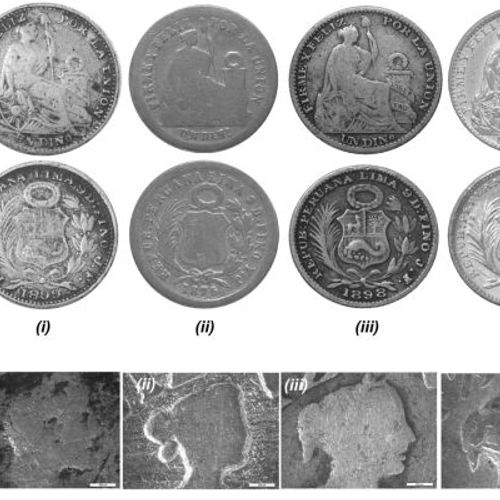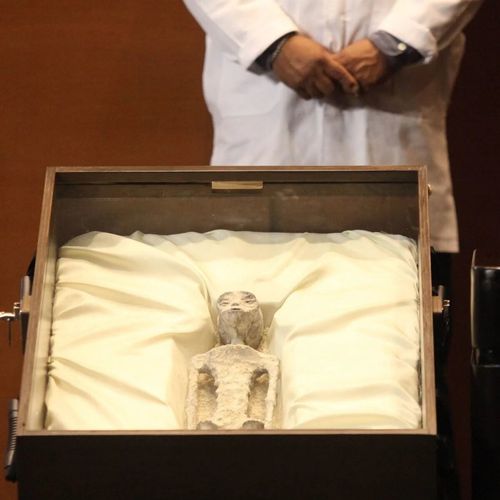
| Added | Thu, 23/03/2017 |
| Источники | |
| Дата публикации | Fri, 23/09/2016
|
| Версии |
One of the most famous cryptographic mysteries of the last decades is the famous Voynich manuscript. Many linguists and mathematicians are struggling to decipher it, but so far without success.
However, it seems that the case of the mysterious code has a long-awaited breakthrough.
The Voynich manuscript is a mysterious manuscript of the XV century, over which scientists have been struggling for more than a dozen years. It was purchased in 1912 by the antiquarian Wilfried Voynich, whose name it is named after. And in 1969, the second-hand bookseller Hans Kraus, who had previously bought the manuscript from Wilfried's heiress Ethel Voynich, presented it to the Beinecke Rare Book Library at Yale University, where the ancient codex is still preserved today. From this moment begins the story of studying and deciphering the mysterious text.
The Voynich Manuscript — a mysterious medieval manuscript written in an unknown language, is not a fake
The manuscript contains 240 pages of thin parchment. The pages are numbered, but most likely much later than the book was written. Gaps in the numbering apparently mean that some of the sheets were lost before the book was found by Voynich. The original codex contained at least 242 pages. In addition to the text, the manuscript contains an abundance of crudely colored illustrations.
According to the results of radiocarbon analysis, scientists have established that the parchment for the manuscript was made between 1404 and 1438.
Indirectly, this assessment is confirmed by the only realistic illustration of the codex-the image of a city with a fortress wall with dovetail battlements. Such walls were widespread in Italy in the first half of the XV century.
The manuscript is written in a unique alphabet that is no longer found anywhere else in the world. But at the same time, the handwriting is steady and clear, as if the alphabet was familiar to the scribe and he understood what he was writing. The first studies of the book showed that the text obeys certain phonetic and spelling rules. Some characters appear in almost every word (like vowels in Russian or English), some never follow others, and some can double in a word (like two " n " in the word "long"). At the same time, the text differs from the European languages.
The Codex contains almost no words longer than ten letters, or, conversely, one-and two-letter words.
Inside the word, the letters are also distributed in an unusual way: some characters appear only at the beginning of the word, others only at the end. Such syntactic features make the text of the manuscript related to the Arabic language or some languages of East Asia. In 1976, physicist William Bennett conducted a frequency analysis of the manuscript text. It turned out that the frequency of repetition of words corresponds to Zipf's law, which is characteristic of natural languages, that is, languages for communication between people.
Zipf's law is a special law of the distribution of words in natural language, according to which the frequency of occurrence in the text of each word will be inversely proportional to its ordinal number. For example, the second-most-used word is about twice as common as the first, the third — three times less common than the first, and so on.
After the first unsuccessful attempts at decryption, the Voynich manuscript became one of the most famous riddles of cryptology. Over decades of text research, mathematicians, linguists, and cryptographers have never come to a consensus about the nature of the code. Whether the book is written in natural language, whether it is a filigree forgery or a special cunning cipher, is still unknown. The question of the authorship of the code is also debatable. At various times, there have been speculations about Roger Bacon, Leonardo da Vinci, and even aliens. In the hope of connecting new people to unravel the mysteries of the manuscript, in August 2016, the Spanish publisher Siloe received the right to publish 898 exact copies of the manuscript.
When creating copies, a special aged paper will be used, as much as possible repeating the structure of the original parchment. Copies will be sent to the largest libraries in the world.
However, Gordon Rugg from the University of Keele in the UK is convinced that the researchers are wasting their time. After ten years of studying the mysterious text in an article published in the journal Cryptologia, he came to the conclusion that such a fake is not so difficult to make.
"We have known for many years that the syllables in the text are not random. That is, I want to say that there is a way to get meaningless text that will not seem random in statistical analysis, " he explains. "It looks like dice." If you roll the dice, then you have six options for the symbol."
With the help of the so — called Cardano grid — a special tool for encrypting and decrypting text-Rugg tried to recreate a text similar to the text from the codex. To do this, the researcher collected all the characters and syllables of the manuscript in one table, determining in advance which characters we consider to be the roots of words, and which are suffixes and prefixes. After that, Rugg made several cardboard grids with holes for symbols. By moving the grids around the table and writing down the resulting symbols, the researcher obtained a text similar to the text of the Voynich book.
Statistical analysis showed that the artificial text also corresponds well to Zipf's law, as if it were a natural language.
Based on his research, Gordon Rugg claims that the mysterious codex is nothing more than a hoax of some medieval prankster.
But many researchers do not agree with the arguments of ragga. Marcelo Montemurro from the University of Manchester in the UK proves that the manuscript still contains a meaningful text. In an interview with New Scientist, he explained that the Voynich Code is too complex to be just a hoax. Montemurro found statistically significant similarities in the text in the part where the botanical drawings are present, and in the pharmaceutical part of the manuscript.
According to the scientist, the text and drawings have a semantic connection.
"This means that whoever did this hoax must have been aware of these subtleties of the text, which are not visible if you just look at it," explained Montemurro. The scientist also noted that to prove the forgery of the text, it is necessary to explain all its features.
By the way, the popularity of the Voynich manuscript has generated a whole wave of imitations, the most famous of which is the Codex Seraphinianus. This is a book written and illustrated by the Italian architect and industrial designer Luigi Serafini in the late 1970s. Also, it has not yet been deciphered.
Vyacheslav Avdeev gazeta.ru
Beinecke Rare Book & Manuscript Library
Translated by «Yandex.Translator»
Новости со схожими версиями
Log in or register to post comments










Constructive discussion of the content of the article is encouraged. Not essential comments will be ignored. Comments that bear the offensive, as well as containing pornography, advertising and promotion (political, religious, etc.) are not permitted and will be removed by administrtation.
Comments
Ну вот! 2013 год Манускрипт Войнича — не является подделкой, 2014 год Британский ученый заявил, что смог расшифровать часть таинственного манускрипта Войнича. Он настаивает на ближневосточном происхождении текста, в то время как американский исследователь считает, что оно может быть мексиканским. И вот в 2016 году снова решили, что манускрипт шутка и мистификация. Ждем от Монтемурро подробный разбор с доказательствами! Если таковой уже есть, то поделитесь ссылкой, кому не лень.
И снова не подделка :) Вот новость: Ученые из Альбертского университета в Канаде применили искусственный интеллект для изучения манускрипта Войнича. Им удалось определить язык документа и перевести первое предложение: "Она дала рекомендации священнику, главе дома, мне и людям". Кроме того, в тексте встречаются слова "фермер", "свет", "воздух" и "огонь".
Новость старая, но добавлю сюда ссылку, чтобы не потерялась:
Историк-любитель утверждает, что нашел код к загадочной рукописи Войнича XV века
Кстати, на этот раз это "трактат о женском здоровьи". Правда, там написано, что другие ученые в этой версии засомневались...